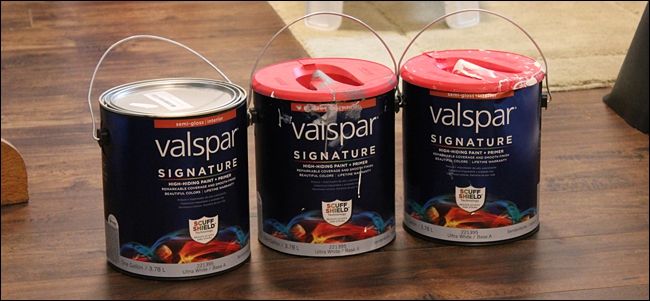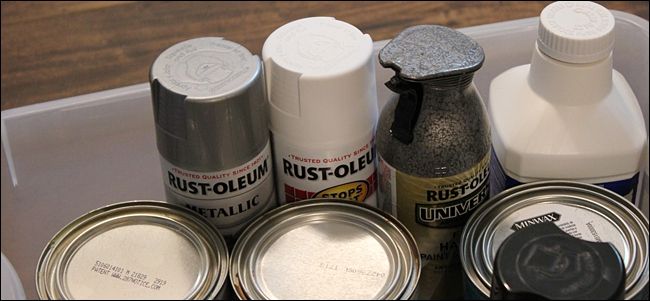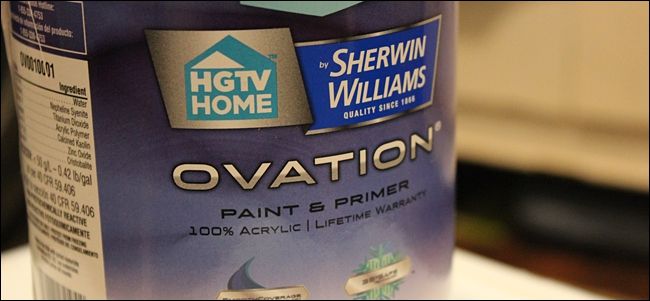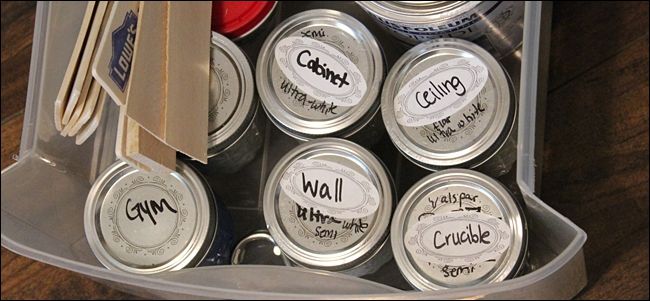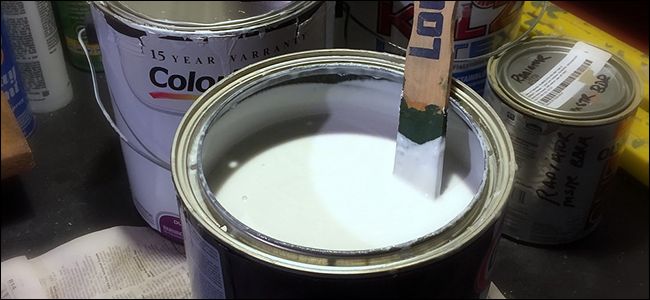Quick Links
Painting is one of those home improvement activities that we've all done at least once, and while it's relatively easy to do, storing the leftover paint afterward can become somewhat of a fine art.
In other words, there's a big chance that you aren't storing paint correctly, and since leftover paint is so common, you probably have a lot of it. Plus, paint is expensive, so it's worth it to take the proper precautions and store your paint the right way so that it doesn't go bad.
Whether you're just the occasional painter or you're all about that hashtag-paintlife, here are some tips to keep that leftover paint as fresh as possible for as long as possible.
Keep It Away From Extreme Conditions
Perhaps one of the single most important methods for storing paint is keeping it out of places that can get extremely hot, extremely cold, extremely humid, and so on.
This usually means keeping it out of a garage or shed that gets really hot and humid during the summer and really cold during the winter. When paint gets really hot, it dries up. And when it gets cold, the paint can separate and create a curdled mess. Plus, the moisture from humidity can rust the paint cans, and when you go to open up the lid, flakes of that rust can get into the paint.
With that in mind, store your paint in a cool, dry place. In my house, that's the utility room closet---it's air conditioned and out of the way.
Seal Up the Paint Can As Best As Possible
Paint stores best when it's sealed in an airtight container. Fortunately, paint cans are able to do this naturally, but many DIYers compromise this at the very start when they go to crack the lid.
It's best not to use a screwdriver to open up a can of paint, as it can dent or warp the lid and compromise the airtight seal when it comes time to put the lid back on. Instead, use a proper paint can opener, which is specifically designed to open up those paint can lids without damaging them.
Furthermore, getting paint into the recessed groove that travels along the rim of the can is a common occurrence, but you actually want that completely free of paint so that the lid gets a proper seal when you go to close up the can. Of course, this is easier said than done, but one thing that can help is by using a paint can spout. It'll keep paint out of that groove and it makes pouring paint much easier in the first place.
When it comes time to actually put the lid back on, use a rubber mallet and gently tap on the lid all around the edge to seat the lid into the can's groove. Don't use a hammer, as it can also dent and warp the lid, ruining that airtight seal. If you don't have a rubber mallet, place a piece of wood over the lid and use a hammer to tamp the lid down.
Some painters put a layer of plastic wrap over the paint can opening before putting the lid back on in order to aid in sealing up the can completely. This is totally fine and encouraged, but it's not absolutely necessary if you follow the steps above.
Keep Everything Clean and Organized
While keeping everything clean and organized won't necessarily help with your paint lasting longer, it can help your sanity.
I like to pour leftover paint into smaller containers if there's not that much left, which is helpful in many ways. First, it significantly lowers the paint-to-air ratio in the container, which will keep the paint fresh for longer. Second, it saves a lot of space when I go from those large metal paint cans to smaller mason jars. Plus, you can label the jars and write which room the paint belongs to.
If you do decide to stick with metal paint cans for storing any leftover paint, be sure to wipe all of the paint off the lid and clean it completely so it looks brand new. Otherwise, that thin layer of paint will dry up and can potentially fall into the paint can when you go to put the lid back on.
Lastly, no matter what containers you store your paint in, keep them free of falling dust and dirt, because the moment you go to open the lid, that dust and dirt can easily fall into the paint and ruin it.
How to Know If Paint Has Gone Bad
If you didn't do the best job when it came to properly storing leftover paint, you might be curious as to whether it has gone bad, and rightfully so.
Give it a sniff. If it smells anything like other than what paint should smell like, it's probably bad. However, try mixing it with a stir stick and see if the paint mixes together smoothly. After that, brush a little bit of the paint onto a test surface and see how well it spreads. If it's rough and bumpy, it's time to get rid of it.
In the end, it's best to use the classic saying: "If in doubt, throw it out". However, with paint being so expensive, no one can blame you for trying to get the most mileage out of leftover paint as possible.
Image from Bob M/Flickr

